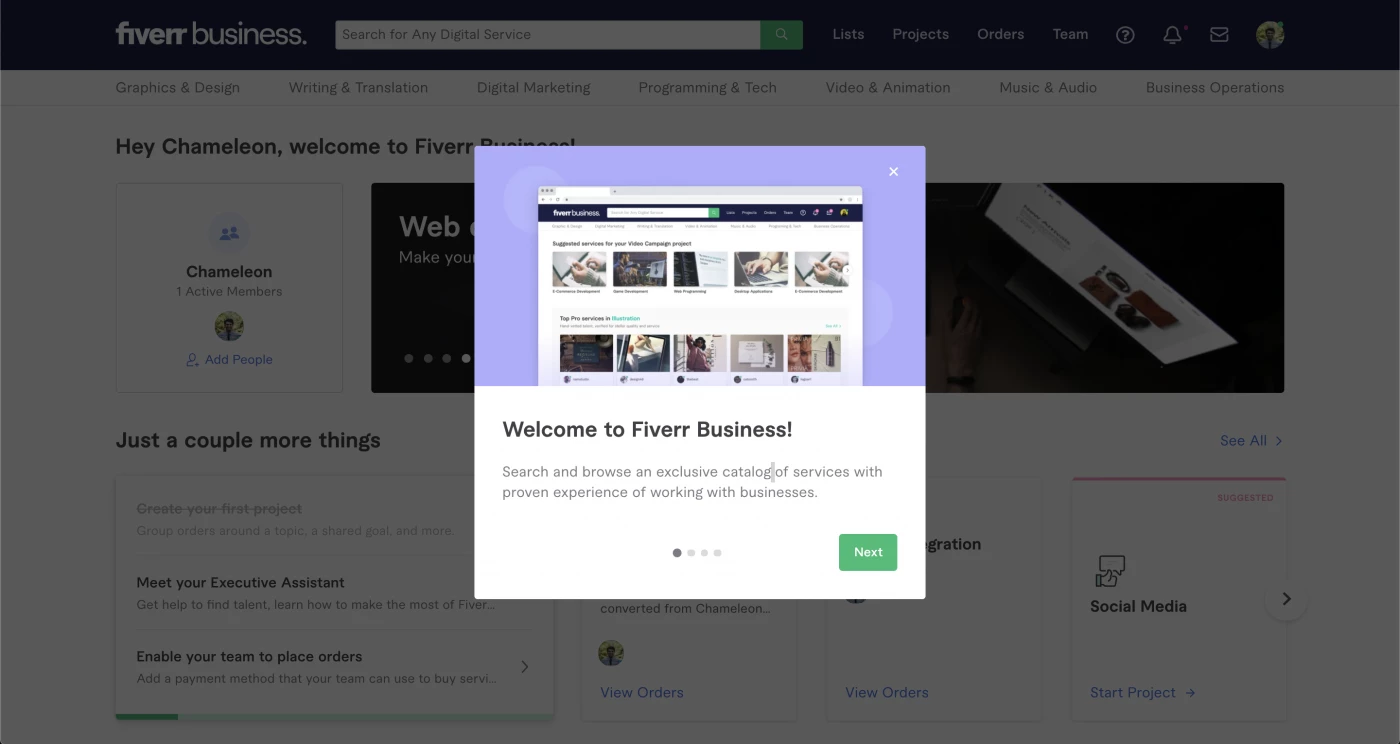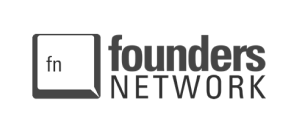In the rapidly evolving world of digital products and services, capturing the attention and loyalty of users has become challenging.
A staggering 75% of apps are opened only once after being downloaded, and users actively engage with just one-third of the apps installed on their phones. This means that a lot of time and effort goes into developing digital products that struggle to retain new customers.
So, to avoid customer churn, it is essential to showcase the value of your product and provide an engaging customer journey from the beginning.
The key to achieving this is crafting an effective customer onboarding process for your product.
This article will explore the critical aspects of customer onboarding, its definition, what makes a good customer onboarding strategy, and best practices.
We’ll show you the best ways to get your new customers to recognise your product’s value, learn how to use it effectively, and, most importantly, stay engaged for the long haul.
What Is Customer Onboarding?

What makes customer onboarding important is that it is a user’s first experience with a product, service, or platform. The main goal of onboarding is to show new users how this product will solve their problems and improve their life.
It’s a crucial moment when the product makes its first impact. During the onboarding phase, there’s a real chance you might lose new customers, especially if your onboarding user interface feels complicated.
A successful onboarding process can empower a new customer, and boost engagement and satisfaction with your product to keep them using it.
So what is an onboarding flow?
Although “onboarding” and “onboarding flows” are frequently used interchangeably, there is a subtle distinction between the two terms.
As mentioned earlier, onboarding is the broader process of introducing new customers to a product and helping them grasp its essential features.
On the flip side, onboarding flows describe the specific series of steps, actions, and interactions users experience during the onboarding process.
These flows are crafted to guide users smoothly through the product’s various features, tasks, and functionalities in an organised and structured way. The aim is to showcase your product’s value, instruct users on its usage, and, most importantly, encourage them to stay engaged.
Onboarding flows come in various forms depending on the type of platform. For instance, a mobile app flow differs from a desktop user flow.
You’ve likely encountered an onboarding flow before. Typically the onboarding process will use a sequence of screens or modals to communicate key messages:

Types of Customer Onboarding Flows
There are several types of onboarding flows, each with its unique approach and focus. There is no correct way to design an onboarding process. The look and feel of your customer onboarding largely depend on the product and where your customer is in the onboarding stage and buyer journey.
Below, we’ll explore the characteristics of four of the most common onboarding subtypes: benefit-focused, function-focused, doing-focused, and account-focused.
🔶 Benefit-focused onboarding flows
This type of customer onboarding strategy emphasises the value and benefits of a product. This approach focuses on getting a new customer to quickly have an “Aha!” moment that helps them understand the “why” behind using the product and how it addresses users’ pain points or goals.
A benefit-focused onboarding process effectively motivates customers to continue exploring the product and stay engaged.
🔶 Function-focused onboarding flows
This type of customer onboarding experience focuses on the “what” aspect of a product by showcasing the top two to three features and explaining how they work. Function-focused onboarding helps customers understand the product’s capabilities and how to use them effectively.
Function-focused onboarding flows will convey the following information:
➡️ What are the key features?
➡️ How to use them?
➡️ Where to find them?
In terms of design, a function-based onboarding flow could include a series of slides shown to a user after downloading your product or app.
You want to capture the user’s attention within the first few seconds of them opening the app, which means you should present the onboarding flow showing the app’s value before you ask the user to take an action like logging in or signing up.
Once you have their attention, ensure you don’t lose it by making it hard to log in or sign up. The best practice is to make login seamless through SSO login or passwordless entry.
🔶 Doing-focused onboarding flows
Doing-focused customer onboarding is action-oriented, guiding customers through the product or service’s first or most common actions or activities. This approach focuses on the “how” aspect of the product, enabling customers to learn by doing.
This type of customer onboarding tool can be highly tool-specific, but broadly it’s about educating customers about how they can navigate your product’s interface to quickly get the best out of the tool.
Doing-focused onboarding can include tooltips, step-by-step tutorials, task completion goals, a customer onboarding checklist, or interactive walkthroughs that guide a new customer through important actions or workflows.
💡Tip: Onboarding isn’t only about new customers
Customer onboarding doesn’t always revolve around product education for new customers. They can also be a valuable tool for helping existing customers to learn about new features and enhancements to your software.
🔶 Account-focused onboarding flows
Also known as a “sign-up flow”, an account-focused customer onboarding process prioritises the setup and registration of a new customer’s account.
This type of customer onboarding can also be used to create a personalised and optimised experience for customers by asking them a range of questions about who they are and how they will use the product.
What Are the Benefits of a Good Customer Onboarding Process?

In today’s competitive SaaS software landscape, a digital product must offer a distinct value proposition and a seamless user-centric experience. A good customer onboarding flow goes a long way in helping SaaS companies get this right.
Successful customer onboarding processes have several benefits, including:
✅ Familiarizing new customers with your product: A good onboarding journey effectively guides customers through the essential features and functionalities of a product or service, enabling them to understand its value and how to use it efficiently, ultimately fostering a seamless experience that keeps customers engaged.
✅ Personalized experiences: A good onboarding flow incorporates personalisation, ensuring customers receive relevant information and guidance tailored to their needs or preferences.
✅ Reduced customer churn: A successful customer onboarding process makes it more likely that customers will continue using the product over time, contributing to better customer retention.
✅ Lower support costs: A clear and informative onboarding flow can help customers become more self-sufficient and reduce their reliance on customer support, ultimately lowering support costs.
✅ Accelerated time to value: By helping new customers get up to speed quickly and effectively, a good onboarding process can shorten the time it takes them to start using the product or service.
✅ Providing valuable feedback and insights: By monitoring user behaviour and engagement during the onboarding process, you can continuously gather insights and feedback to improve and optimise the onboarding experience.
Best Practices for Creating Killer Onboarding Flows

A good customer onboarding process helps new users understand the product, its value, and how to use its features effectively. Before you create your onboarding process, consider answering the following questions to focus your thinking:
❓ What is the real benefit you aim to provide to your customers?
❓ Which actions must new users perform to obtain this primary benefit?
❓ Are there any obstacles or challenges within those steps?
❓ What behaviours do long-term users exhibit? How can you motivate new users to adopt these behaviours?
❓ How familiar are your new users with similar products?
❓ How straightforward is it for users to grasp your core features and benefits?
Once you have answered these questions, here are some of the most important factors to consider when creating an onboarding experience:
💥 Focus on the customer: The main purpose of your onboarding flow is to show your users how your product will solve their problems.
If users get to a point where they understand how your product provides a solution to their problems, the likelihood of them staying engaged with your product and becoming long-term customers is much higher.
So focus on creating an onboarding flow based on the customer’s perspective, which gets them to the “Aha” moment of understanding how your product will help them.
💡 Tip: Long product tours are boring
As product managers, we understand how much work goes into creating a digital product. It’s tempting to showcase all the features of your product; however, it’s a better idea to rather hold back and direct users to experience specific “Aha” moments.
People will need different things and you can create tailored onboarding flows to answer these specific needs.
💥 Clarity: Provide clear instructions and explanations to make it easy for users to understand the purpose and functionality of your product.
💥 Keep it simple: Ensure that your onboarding flow is simple. Avoid overwhelming users with too much information or complex tasks at the beginning.
💥 Engaging design: Use visually appealing and intuitive design elements to make the onboarding experience enjoyable and engaging. Good design helps users navigate the process more easily and encourages them to explore your product further.
💥 Interactive elements: Incorporate interactive elements – such as tooltips, guided tours, or in-app tutorials – to encourage users to learn by doing. This hands-on approach makes it easier for users to retain and apply information effectively.
💡 Tip: Embrace the IKEA effect
Don’t make your interactive elements too easy! You want your users to be working hard. It’s what’s known as the “IKEA effect”.
The IKEA effect suggests that when people invest their time, effort, and labour into building or customising a product, they develop a stronger emotional attachment and pride in the outcome.
By incorporating elements that capitalise on the IKEA effect, onboarding flows can foster a stronger sense of personal investment and ownership among users.
However, it’s essential to strike the right balance between user involvement and simplicity to avoid overwhelming users or creating unnecessary barriers to adoption.
💥 Personalization: Tailor the onboarding experience to the customer’s specific needs and preferences. Create branched experiences that allow them to choose their path and identify which parts of the app make sense for them to learn about.
💥 Just-in-time guidance: Provide guidance and help at the right time and place, ensuring users receive relevant information when needed.
💥 Goal orientation: Set clear, achievable goals for users during onboarding. By accomplishing goals, customers realise your product’s value and become more invested in using it.
💥 Positive reinforcement: Celebrate your users when they reach their goals! Positive reinforcement can motivate users to continue engaging with your product and increase their sense of accomplishment. Happy customers will have a longer customer lifetime.
💥 Easy access to support: Make it easy for users to access helpful resources and support channels if they get stuck during the onboarding process.
💥 Test and iterate: Iterative development is the best way to create good products. Collect and analyse customer behaviour data to identify areas for improvement in the customer onboarding process. Continuously refine and iterate on your onboarding process to optimise the customer experience.
Case Study: Superhuman

One of the best customer onboarding examples is a company called Superhuman. For those not aboard the Superhuman hype train on Twitter since the pre-pandemic era, Superhuman is a premium email client designed to make email management faster and more efficient.
The platform is designed for serious email users who can’t sleep without “inbox zero”. The product helps users to focus on speed and keyboard shortcuts. Also, its AI-powered features make it a popular choice for users who want to enhance their email productivity.
One of the main reasons this platform is so successful is its unique onboarding approach. Superhuman gets it right and touches on every onboarding flow best practice. Here are a few reasons Superhuman stands out:
Personalised onboarding
Superhuman schedules a one-on-one video call with new users, where a customer success manager personally guides customers through the app’s features and helps them set up their account.
This personalised touch creates a strong connection between the user and the company, making the onboarding experience feel more intimate and tailored to each individual.
Users learn by doing
During an onboarding call, Superhuman will get users to learn the platform by using it. The customer success team will teach users about keyboard shortcuts, features, and customisations that can help them save time and work more effectively.
This training session adds value to the user experience and encourages customers to adopt the platform fully.
Follow-up and feedback
After the initial onboarding, Superhuman checks in with users to answer any questions and gather customer feedback to ensure they are satisfied with the app. This continuous engagement demonstrates the company’s commitment to customer satisfaction and helps identify any areas for improvement.
Clear value proposition
Throughout the onboarding process, the Superhuman customer success manager will communicate the product’s value proposition, highlighting how it can improve the user’s email experience.
Understanding the value helps users reach an “Aha” moment about the product’s benefits, convert them into loyal customers, and nurture an ongoing relationship.
In our current era of instant gratification, it’s refreshing to see a company invest 30 minutes in personally guiding new customers through their product.
This highly personalised onboarding process takes time, BUT it demonstrates their commitment to user success and stands out as a genuine and welcome contrast to the typical (read terrible) SaaS companies’ self-service experiences we’ve grown accustomed to.
Summary
By now, we hope you’ve decided to abandon your 15-minute product walkthrough in favour of a more holistic onboarding process! A well-designed customer onboarding experience introduces users to a product’s features and addresses their needs, concerns, and motivations.
Great onboarding flows also play a huge role in user adoption and satisfaction. By investing time and effort in guiding users, you can set the stage for a positive, long-term relationship, ultimately leading to higher customer retention rates and a more enjoyable user experience.
MOHARA Can Help
We’re a product venture studio with over ten years of experience developing software for startups.
Having helped more than 30 pioneering startups bring successful software products to market, we know the product development process from start to finish, including designing and implementing effective, customer-centric onboarding experiences.
If you have a great business idea, we can help you build it and bring it to market successfully.
Why not get in touch with us and see how we can help you?
Let’s be pioneers together!











